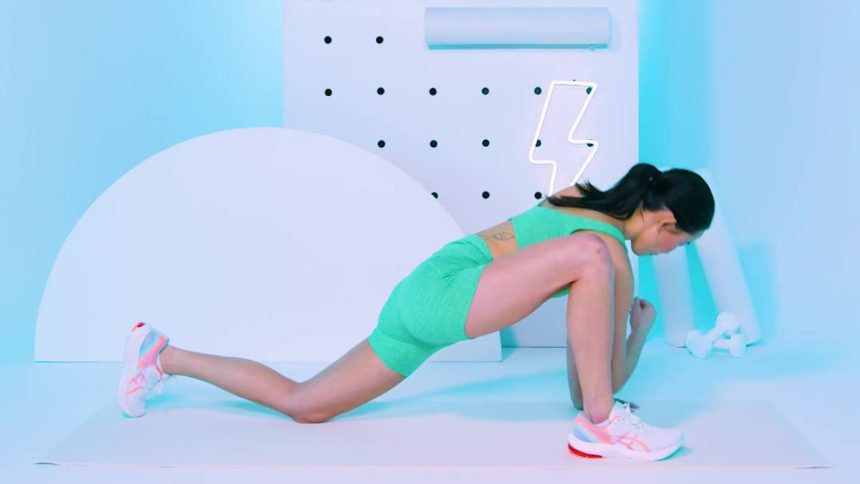In our fast-paced world, staying flexible and mobile is crucial for maintaining overall health and quality of life. Whether you’re sitting at a desk all day or pursuing an active lifestyle, incorporating mobility exercises into your routine can make a significant difference. These exercises not only enhance flexibility but also improve posture, reduce the risk of injury, and boost overall well-being. Here’s a guide to the top 10 mobility exercises that can help unlock your flexibility and improve your daily movement.
1. Hip Circles
What Are Hip Circles?
Hip circles involve moving the hips in a circular motion to enhance flexibility and mobility in the hip joint. This exercise helps in maintaining hip joint health and can be particularly beneficial for those who sit for extended periods.
How to Perform Hip Circles:
- Stand with your feet hip-width apart.
- Place your hands on your hips.
- Gently move your hips in a circular motion, making the circles as wide as comfortable.
- Perform 10 circles in each direction.
Tips for Incorporation:
- Perform hip circles every morning to start your day with loosened hips.
- Use them as a warm-up before more intense exercises or activities.
2. Shoulder Rolls
What Are Shoulder Rolls?
Shoulder rolls involve lifting your shoulders towards your ears and then rolling them back and down. This exercise targets the shoulder joints and upper back, reducing tension and improving range of motion.
How to Perform Shoulder Rolls:
- Stand or sit with your back straight.
- Lift your shoulders up towards your ears.
- Roll them back and down in a smooth, controlled motion.
- Perform 10 rolls in each direction.
Tips for Incorporation:
- Integrate shoulder rolls into your daily routine, especially if you work at a computer.
- Use them to alleviate shoulder tension before bedtime.
3. Cat-Cow Stretch
What Is the Cat-Cow Stretch?
The Cat-Cow stretch is a yoga pose that involves alternating between arching and rounding your back. It enhances flexibility in the spine and helps in relieving lower back stiffness.
How to Perform the Cat-Cow Stretch:
- Start on all fours with your wrists under your shoulders and knees under your hips.
- Inhale and arch your back, lifting your head and tailbone towards the ceiling (Cow Pose).
- Exhale and round your spine, tucking your chin towards your chest (Cat Pose).
- Repeat the sequence for 10-15 breaths.
Tips for Incorporation:
- Perform the Cat-Cow stretch multiple times a day, especially if you have a sedentary job.
- Use it as part of a morning or evening stretching routine.
4. Standing Forward Bend
What Is the Standing Forward Bend?
The Standing Forward Bend is a simple stretch that targets the hamstrings, lower back, and calves. It helps in improving overall flexibility and easing tension in the lower body.
How to Perform the Standing Forward Bend:
- Stand with your feet hip-width apart.
- Slowly bend forward at the hips, keeping your knees slightly bent if necessary.
- Reach towards the floor or your shins, depending on your flexibility.
- Hold the position for 20-30 seconds and then slowly rise back up.
Tips for Incorporation:
- Incorporate this stretch after sitting for long periods to relieve lower back tension.
- Perform it as part of your pre- or post-workout routine.
5. Lunges with a Twist
What Are Lunges with a Twist?
Lunges with a twist combine a basic lunge with a rotational stretch, targeting the hip flexors, quads, and core. This exercise enhances flexibility in the hips and strengthens the lower body.
How to Perform Lunges with a Twist:
- Step forward with one foot into a lunge position.
- Keep your front knee over your ankle and your back leg straight.
- Place your hands together and twist your torso towards the front leg.
- Hold for a few seconds, return to the starting position, and switch legs.
Tips for Incorporation:
- Perform this exercise as part of a dynamic warm-up before workouts.
- Incorporate it into your routine to improve hip mobility and core strength.
6. Torso Twists
What Are Torso Twists?
Torso twists involve rotating the upper body while keeping the lower body stable. This exercise helps in improving spinal flexibility and core strength.
How to Perform Torso Twists:
- Stand with your feet shoulder-width apart and your knees slightly bent.
- Extend your arms out to the sides at shoulder height.
- Rotate your torso to one side, keeping your hips facing forward.
- Return to the center and twist to the other side.
- Perform 10 twists to each side.
Tips for Incorporation:
- Use torso twists as part of your daily stretching routine to enhance spinal mobility.
- Incorporate them into your warm-up to activate your core muscles.
7. Seated Forward Fold
What Is the Seated Forward Fold?
The Seated Forward Fold is a stretch that targets the hamstrings, lower back, and spine. It promotes flexibility and relaxation in the lower body.
How to Perform the Seated Forward Fold:
- Sit on the floor with your legs extended straight in front of you.
- Reach forward towards your toes, keeping your spine long.
- Hold the position for 20-30 seconds, then slowly come back up.
Tips for Incorporation:
- Perform this stretch after a workout or long periods of sitting.
- Use it to improve flexibility in the hamstrings and lower back.
8. Spinal Rotations
What Are Spinal Rotations?
Spinal rotations involve twisting the spine while keeping the lower body stable. This exercise helps in increasing spinal flexibility and reducing back stiffness.
How to Perform Spinal Rotations:
- Sit on the floor with your legs crossed or extended.
- Place one hand on the opposite knee and twist your torso towards that side.
- Hold for 20-30 seconds, then switch sides.
Tips for Incorporation:
- Integrate spinal rotations into your morning or evening routine.
- Use them to enhance spinal flexibility and ease back tension.
9. Child’s Pose
What Is Child’s Pose?
Child’s Pose is a yoga pose that provides a gentle stretch for the back, hips, and thighs. It is excellent for relaxation and flexibility.
How to Perform Child’s Pose:
- Kneel on the floor with your toes touching and knees apart.
- Sit back on your heels and extend your arms forward on the floor.
- Lower your forehead towards the ground and hold the position for 30-60 seconds.
Tips for Incorporation:
- Use Child’s Pose as a relaxation technique before bedtime.
- Incorporate it into your daily routine to alleviate back and hip tension.
10. Wall Angels
What Are Wall Angels?
Wall Angels are a simple exercise that helps in improving shoulder mobility and posture. They are particularly useful for counteracting the effects of poor posture from sitting at a desk.
How to Perform Wall Angels:
- Stand with your back against a wall, feet a few inches away from the base.
- Press your lower back, upper back, and head against the wall.
- Raise your arms to shoulder height, bending your elbows to form a “W” shape.
- Slowly move your arms up the wall to form a “Y” shape, then return to the starting position.
- Perform 10-15 repetitions.
Tips for Incorporation:
- Perform Wall Angels daily to improve posture and shoulder mobility.
- Use them as a quick break from desk work to counteract stiffness.
Conclusion
Incorporating these top 10 mobility exercises into your daily routine can significantly enhance your flexibility, ease of movement, and overall quality of life. Whether you’re looking to relieve stiffness, improve your posture, or simply stay active, these exercises offer a range of benefits that can be tailored to fit your needs. Start with a few exercises and gradually build them into your daily schedule to experience the full benefits of improved mobility and flexibility. Your body will thank you!
Lynn Martelli is an editor at Readability. She received her MFA in Creative Writing from Antioch University and has worked as an editor for over 10 years. Lynn has edited a wide variety of books, including fiction, non-fiction, memoirs, and more. In her free time, Lynn enjoys reading, writing, and spending time with her family and friends.















